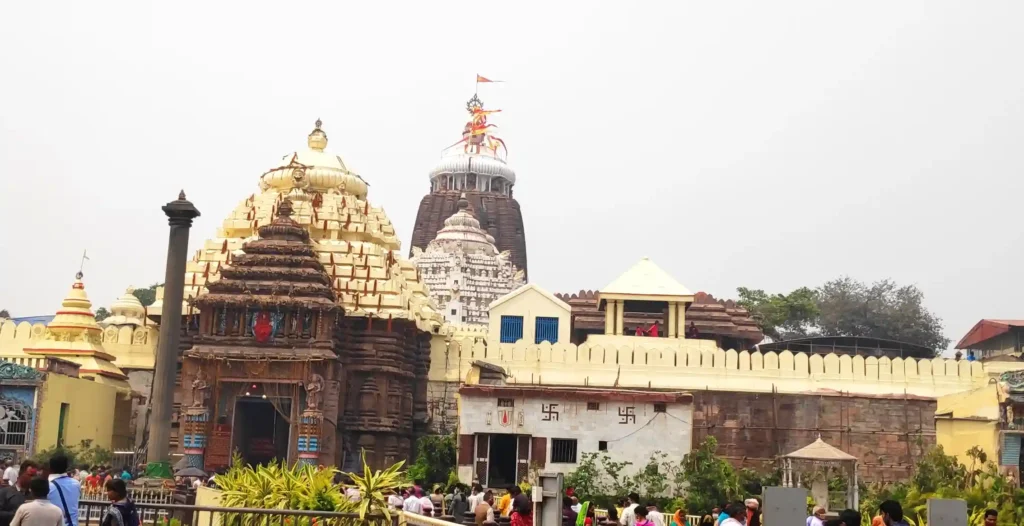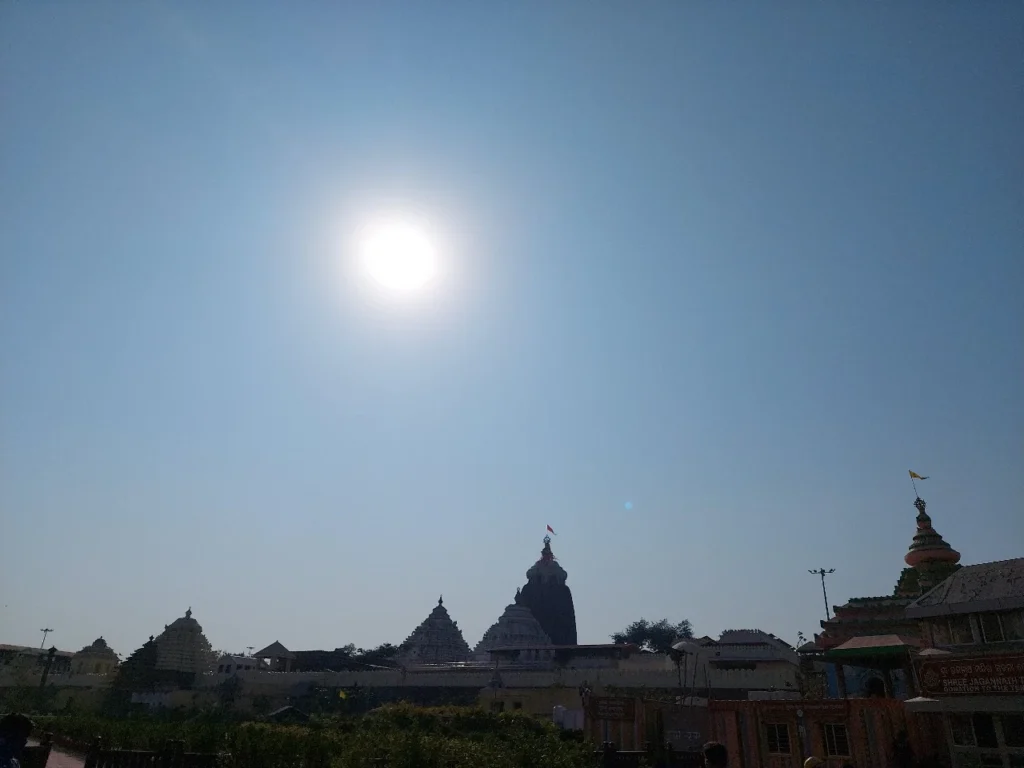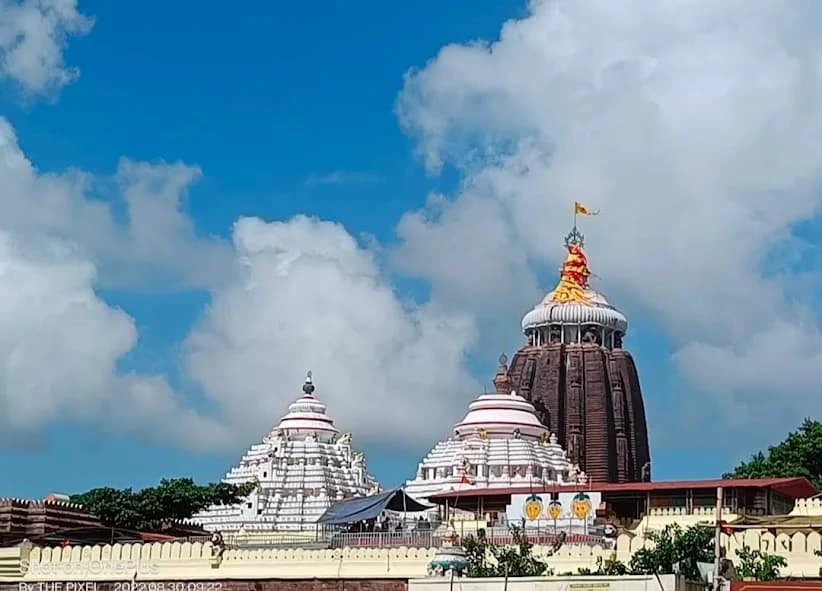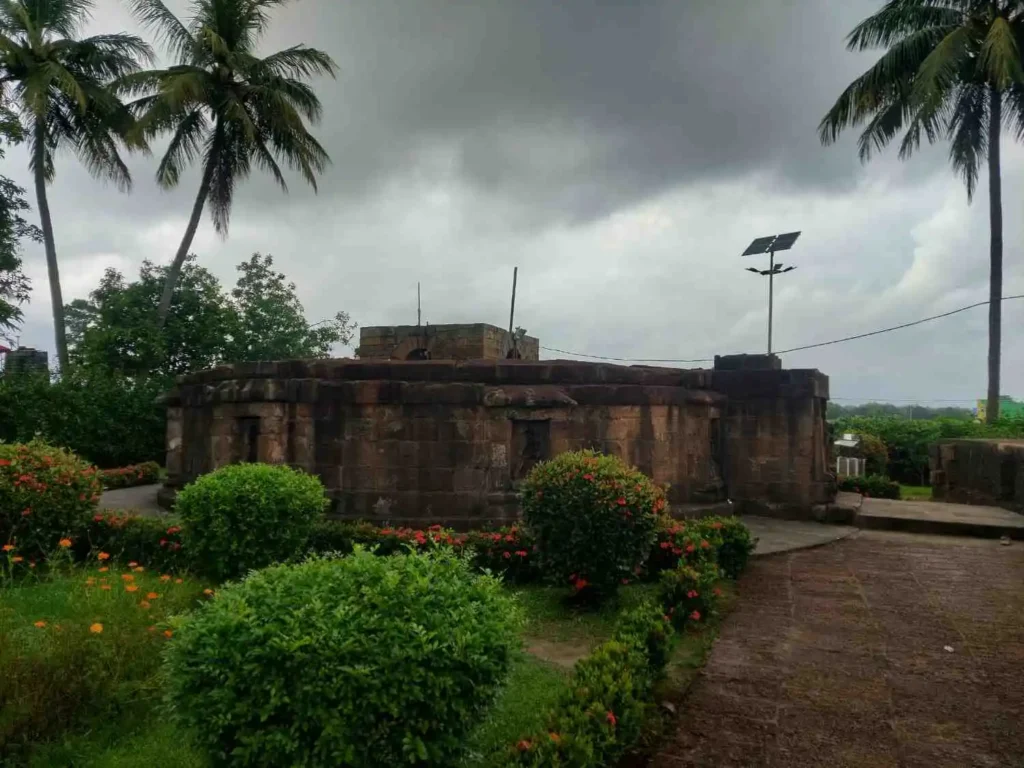
Table of Contents
Significance of Puri Jagannath Temple
To begin with, the main structure of the Jagannath Temple was built in the 12th century CE by King Anantavarman Chodaganga Deva of the Eastern Ganga dynasty. Furthermore, it holds immense cultural, religious, and architectural relevance, representing one of the four sacred dhams of Hinduism. Finally, the deities worshipped here—Jagannath, Balabhadra, and Subhadra—are revered by millions.
One unique aspect of this temple is its four majestic gates:
- Simha Dwara (East / Lion Gate) – Symbolizing Dharma
- Ashwa Dwara (South / Horse Gate) – Symbolizing Kama
- Vyaghra Dwara (West / Tiger Gate) – Symbolizing Moksha
- Hasti Dwara (North / Elephant Gate) – Symbolizing Artha

Meghanada Prachira – The Outer Shield of Divinity
Why was it built?
Historically, it served both aesthetic and defensive purposes. Specifically, during times of Muslim invasions in the 15th and 16th centuries, this wall acted as a protective bastion for both civilians and soldiers.
Interestingly, a fascinating local belief says that this wall blocks the sound of the sea (Bay of Bengal) inside the temple premises. Even though the roaring sea is audible outside, it becomes eerily silent within the sanctum—thanks to the acoustic design of this structure.Who built it?
Kurma Bedha – The Sacred Inner Wall
Initially, the sacred complex begins with the Kurma Prachira, also known as Kurma Bedha—the inner compound wall shaped like a tortoise (Kurma). This massive wall, measuring 420 ft by 315 ft and 5 ft thick, surrounds the sanctum and reinforces spiritual security.
Furthermore, the Kurma Bedha also contains several gates besides the main four. These gates connect directly to:
- Ananda Bazaar (north-east corner): Devotees gather here to buy and share the sacred Mahaprasad.
- Temple kitchen (east-south corner): Temple cooks prepare the world’s largest daily offering to the deities here.
Historical Timeline
Koili Baikuntha – The Spiritual Heart of Jagannath
Why is Koili Baikuntha important?
- Firstly, burial site for old deities: Devotees bury the old wooden idols of Lord Jagannath, Balabhadra, Subhadra, and Sudarshan here during the Nabakalebara (new body ritual).
- Secondly, birthplace of new idols: Artisans sculpt the new divine forms at this site.
- Thirdly, botanical sanctity: A Malati creeper and a sacred garden thrive here, radiating spiritual energy.
- Fourth, guarded by Lord Shiva: Lord Baikuntheswar Mahadev protects this sanctified area.
People Also Ask
Q1. Why is Puri Jagannath Temple so special?
Q2. What is Meghanada Prachira in Jagannath Temple?
Q3. What is Kurma Bedha in Puri Temple?
Q4. What happens in Koili Baikuntha?
Q5. Who built the Jagannath Temple at Puri?
Final Thoughts: Why You Should Visit Puri Jagannath Temple
Embrace India’s spiritual heritage and plan your pilgrimage with Puri Jagannath Temple at the top of your list. Explore this divine complex as a historian, a devotee, or a curious traveler, and uncover its timeless mysteries.
➡️ Share this blog with fellow spiritual seekers.
➡️ Bookmark it for your next trip to Puri.


